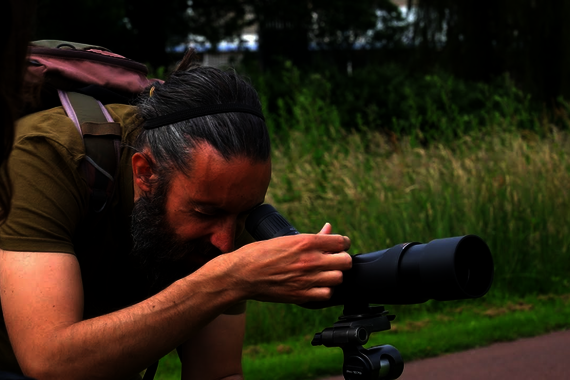In addition to the Green Strip, the campus is getting a Blue Strip
TU/e is getting a Blue Strip: an elongated pond approximately 270 meters long that will be located in front of the new residential towers Castor and Pollux and will be used to store rainwater. This new storage system is in line with a new policy plan drawn up by Real Estate late last year on water drainage, biodiversity, heat stress and employee mental health.
Currently, all the rainwater that falls down on campus flows almost directly into the Dommel via drainage systems. The system has been in place since the university was founded, which makes it special, says Thijs Mooren, account manager at Management and Maintenance. “It was very advanced at the time.” In order to handle increasingly heavy rainfall, the university is going to use new methods for collecting water. For example, a “Blue Strip” will be constructed to connect water drainage systems. It is currently little more than a very long concrete basin, but will soon be a pond with both a hard quay with steps and a green bank.
When the water in that basin rises above a certain level, it flows over into so-called wadis: a kind of green ditch. When these wadis fill up, they, in turn, overflow into the Dommel. “This way you delay the water drainage,” Mooren explains. “The Blue Strip can hold quite a few cubic meters of water, for example during very heavy rainfall. By temporarily retaining the water and not draining it immediately, you ensure that the sewers don’t overfill in the future. Because if they do, the water will come back up into the buildings via manhole covers and drains. And there are quite a few buildings on campus that are situated below ground level.”
Green-blue structures
How rainwater storage and drainage should be managed from now on is described in a Real Estate policy plan, which has served as a guideline for new (construction) plans and existing management since the end of last year. That guideline was intended to bring more attention to the green-blue structures (nature and water, Ed.).
The landscaping that is currently being done around the residential towers is already in line with the document and serves as a kind of template for the future, says Mooren. “We’re also letting the vegetation from the Dommel enter the area near the towers, using nature as a starting point. So we let it grow wild and only mow where picnic sets will be placed or where we want people to be able to recreate. It’s the exact opposite of our approach for the Green Strip, which was specifically designed for use.”
Daffodils
As for the Green Strip itself – where perceived temperatures can rise to over 41 degrees, according to the document – the university is now also looking for areas of improvement. “The place has already become much greener. There used to only be a road with a parking lot and bike parking. But we’re now looking for areas where we can allow the vegetation to grow even more freely. We also have spots in the grass where flowers are popping up. Right now, it’s just daffodils, but we’re going to plant more species there. They will be finished blooming before the events start.” After all, adding more greenery is only possible if the location allows for it. Some places are simply not suited for it because they serve other purposes, such as event locations or parking lots. Although the latter can be adjusted to allow for better water permeability.
Text continues below the video.
There is no concrete measurable goal for the plan. That was a deliberate choice, according to Mooren. “We generally follow the projects. The green-blue policy plan is applied to every project involving outdoor space.” The design must also be aligned with that, he says. At the same time, architecture must be taken into account. “There’s an architectural main structure that you can’t touch. For example, the plane trees along De Zaale have cultural and historical value. In the area around it we have a little more freedom, to plant other tree species, for example. By the way, plane trees don’t contribute much to biodiversity, but they do capture fine dust. That’s an important function that shouldn’t be overlooked.”
Nature-inclusive
The goal of the plan is simply to let nature thrive more freely on campus. This should result in more biodiversity, less water nuisance, improved employee well-being and less heat stress (a direct effect of more greenery). Nature-inclusive or ecological management, Mooren calls it. At some places, it is as simple as not mowing as much grass; at others, it requires a little more effort – such as the construction of a giant concrete water basin. But step by step, it makes the campus a little greener and better able to withstand whatever climate change may bring.
![[Translate to English:]](/fileadmin/_processed_/7/8/csm_BlauweLoper-Complexfoto_889_copy_fb3072856c.jpg)


Discussion